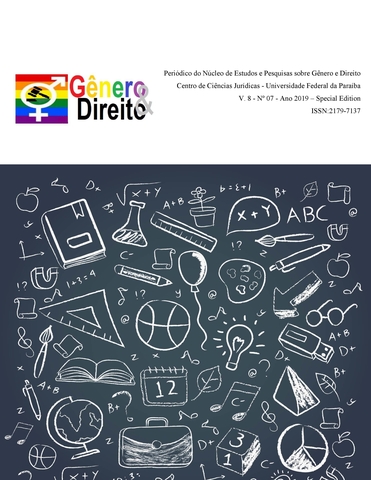DERIVATION-SEMANTIC FEATURES OF THE FAMILY OF WORDS WITH THE VERTEX KITAJ
DOI:
https://doi.org/10.22478/ufpb.2179-7137.2019v8n7.49975Palavras-chave:
borrowing, derivation, derivative word, derivational potential, derivational meaning.Resumo
The article is concerned with the study of word-formation and semantic features of Russian derivatives that make up the family of words with the vertex Китай (Kitaj). With the intensification of cooperation and the expansion of intercultural contacts between China and Russia, the concept Китай (Kitaj) continues to be actively developed in modern Russian, enriched with new meanings and new forms of expression of these meanings via derivation. Against this background, the formation of a scientific image of the family of words with Китай (Kitaj) seems necessary and relevant, primarily from the standpoint of the derivational-semantic approach. The present paper considers more than 50 words that are included in the family of words with Китай (Kitaj), which are lexicalized in the Russian word-formation dictionary by A.N. Tikhonov (28 units) and Internet resources (23 units). The article analyzes the word-formation structure of these words, reveals their semantic features, considers derivational relations between the units of the family, determines a set of word-formation categories that are realized in this family. It is concluded that a large volume of the family of words with the top word Китай and the complexity of its formal and semantic structure indicate the importance for the native speakers of the Russian language of the concept designated by the original word of the family
Downloads
Referências
Nikolayev, G. A. (2009). Lectures on Russian Word Formation: Textbook. Kazan, State University, Philological Department. Kazan; Kazan State University, 188 p.
Mattiello, E. (2017). Analogy in word-formation: A study of English neologisms and occasionalisms (Vol. 309). Walter de Gruyter GmbH & Co KG.
Ten Hacken, P., & Thomas, C. (2013). The semantics of word formation and lexicalization. Edinburgh University Press.
Makleeva, E., Kosova, V., & Miao, S. (2018). Jargon compressive nominations from the point of view of the Russian linguistic world-image. Journal of Language and Literature, 7(1), 199-202.
Volskaya, A. S., Chupryakova, O. A., Safonova, S. S., & Karipzhanova, G. T. (2018). Semantico-Functional Features of Expressive Derivatives in the Artistic Discourse of V. Makanin. International Journal of Engineering & Technology, 7(4.36), 983-985.
Matveeva, N. N., Fatkhutdinova, V. G., & Khromov, S. S. (2018). Lingo-Didactic Potential Derivation Syntagmatics in Russian Language. The Journal of Social Sciences Research, 166-169.
Alyokhina, T. A., Shchuklina, T. Y., & Mardieva, L. A. (2016). Teaching Russian composites: normative and derivative aspects (on the material of compound adjectives in the Russian language). Modern Journal of Language Teaching Methods, 207-211.
Lukankina, T., Shchuklina, T., Mardieva, L., & Wapenhans, H. (2018). Active processes in usual affixation word formation of the contemporary Russian language. National Academy of Managerial Staff of Culture and Arts Herald, (3).
Yakusheva, M. (2016). Term Formation Methods in the Russian Language in the Sphere of Corporate Governance. Mundo Eslavo, 1(15), 77-96.
Tikhonov, A. N. (2008). Word-Formation Dictionary of the Russian Language: In 2 Volumes. More than 145,000 Words.– M.: AST: Astrel, 1, 463 p.
Russian Grammar. (1980). Vol. 1. Phonetics. Phonology. Stress Intonation. Word Formation. Morphology. M.: Nauka, 789 p.
Explanatory Dictionary of Word-Formation Units of the Russian Language: Approximately 1990 Word-Formation Units. (2005). M.: AST: Astrel, 636 p.
National Corpus of the Russian Language [Electronic resource]. URL: http://www.ruscorpora.ru/new/ (accessed: July 04, 2019).
Bukchina, B. Z., & Kakalutskaya, L. P. (1998). In One Word or Separately? Spelling Dictionary. – M.: The Russian Language. [Electronic resource]. URL: http://dic.academic.ru/dic.nsf/rus_orthography/27313/%D0%B8%D0%BD%D0%B4%D0%BE%D0%BA%D0%B8%D1%82%D0%B0%D0%B9%D1%81%D0%BA%D0%B8%D0%B9 (accessed: July 04, 2019).
Yefremova, T. F. (2000). New Dictionary of the Russian Language. Interpretative and Derivational. – M.: The Russian Language, [Electronic resource]. URL: https://www.efremova.info/ (accessed: July 04, 2019

